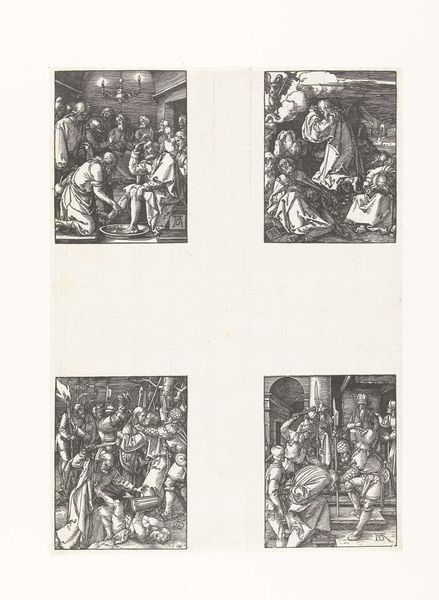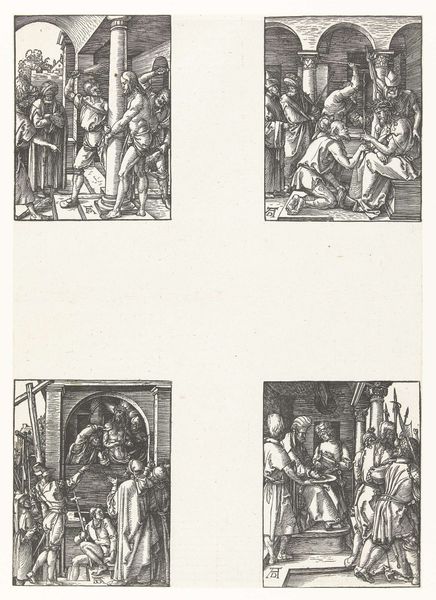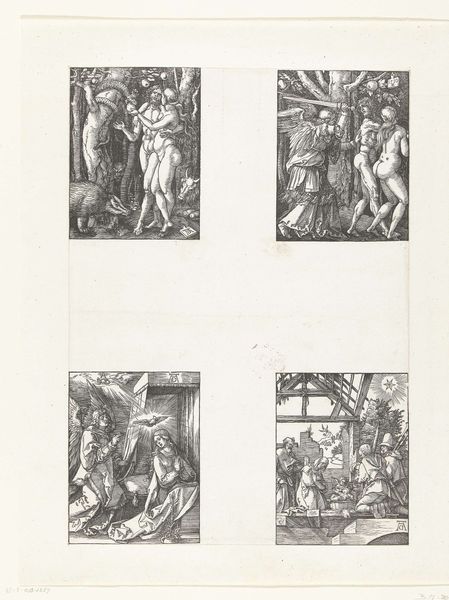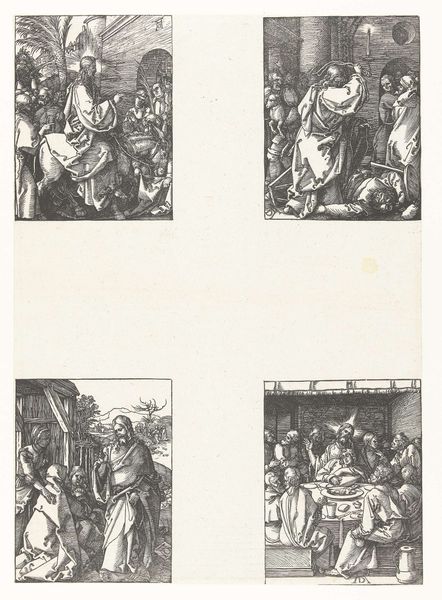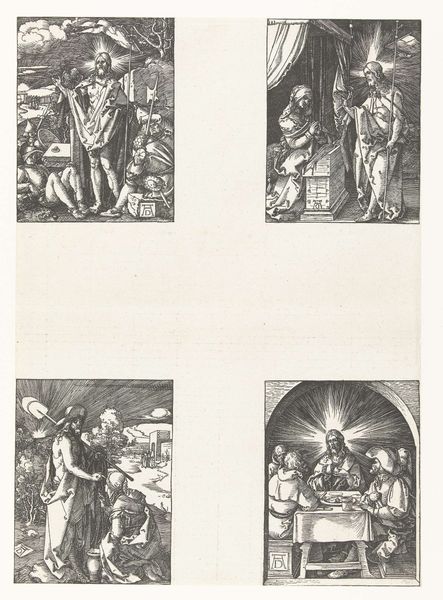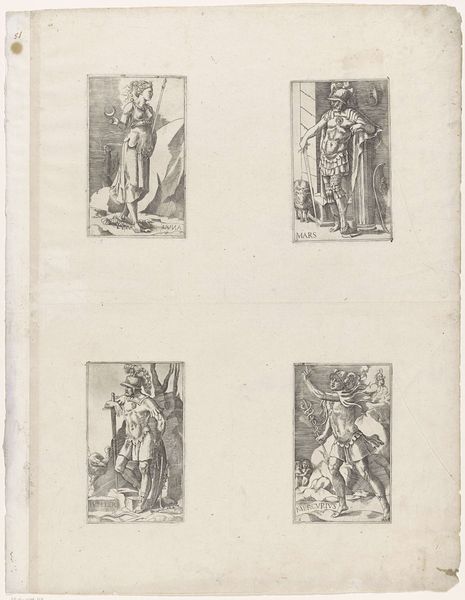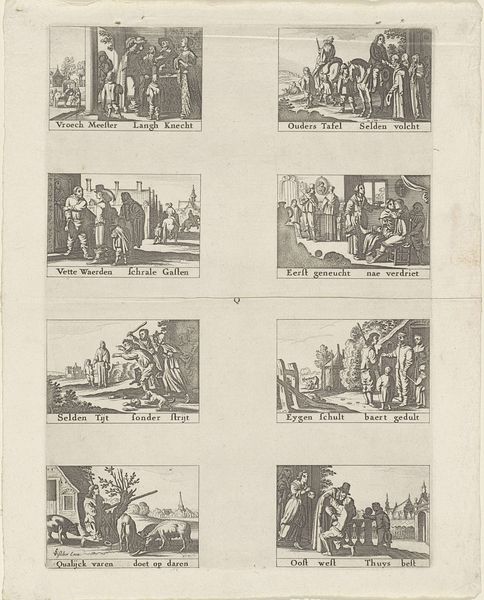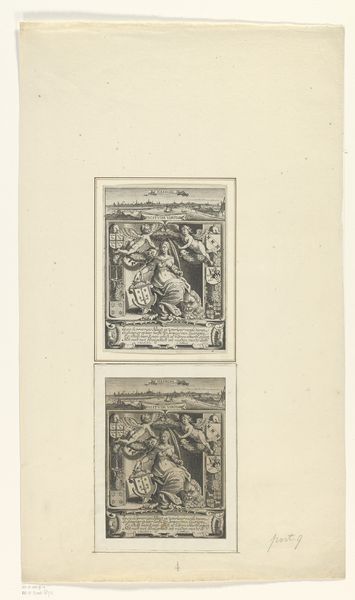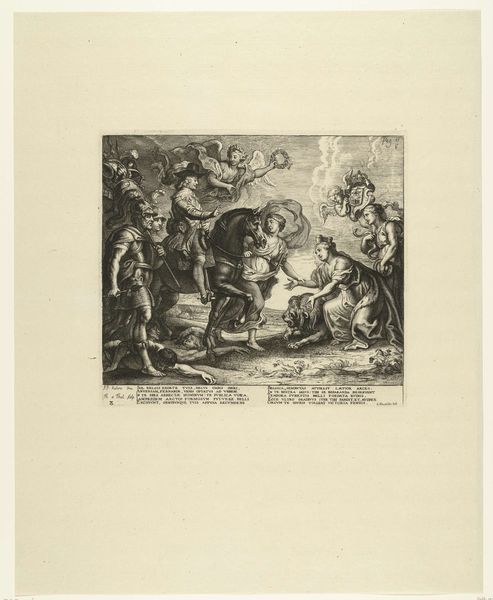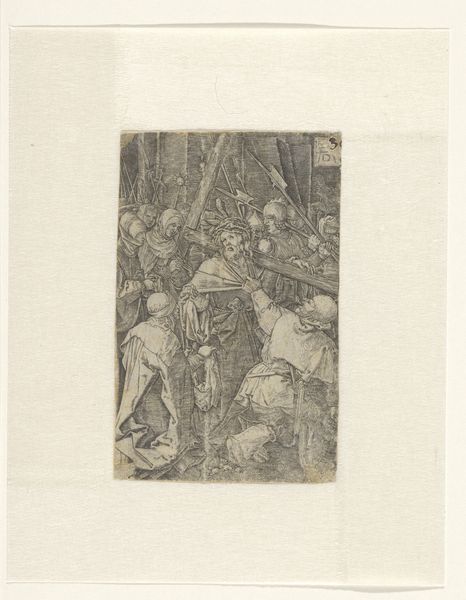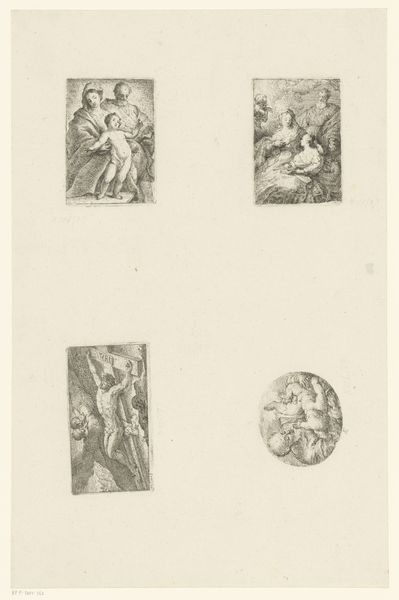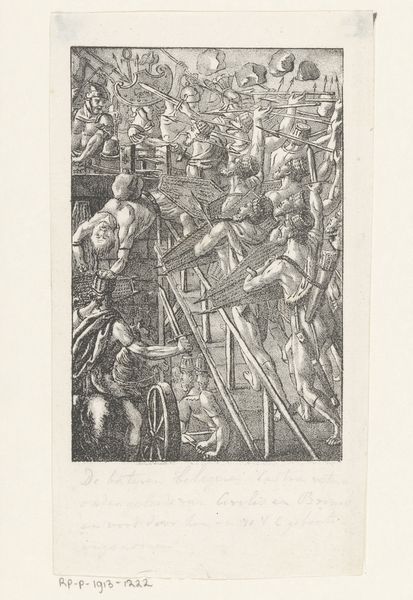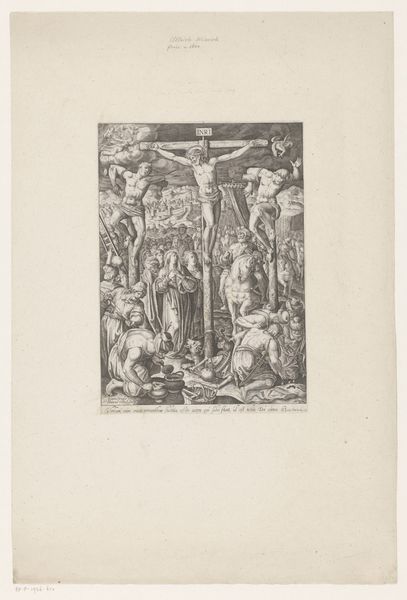
Afdaling in het voorgeborchte, Kruisafneming, Bewening, Graflegging 1509 - 1510
0:00
0:00
albrechtdurer
Rijksmuseum
drawing, ink, woodcut, pen
#
drawing
#
ink drawing
#
narrative-art
#
pen drawing
#
figuration
#
ink
#
woodcut
#
pen
#
history-painting
#
northern-renaissance
Dimensions: height 127 mm, width 97 mm, height 354 mm, width 252 mm
Copyright: Rijks Museum: Open Domain
Albrecht Durer made this series of four scenes – Descent into Limbo, Descent from the Cross, Lamentation, and Burial – using an engraving technique. The stark contrast between the black lines and the white paper gives each scene a dramatic quality. Look closely, and you can almost feel the pressure Durer exerted as he used a tool called a burin to carve lines into a copper plate. The ink settles into these grooves, and when pressed onto paper, it creates the image we see. Consider the labor involved: each line carefully etched, each print meticulously made. Durer's skill transformed metal into a means of mass production, making art more accessible in his time. The inherent qualities of the engraved line – its precision, its capacity for detail – lend themselves well to the subject matter, the story of Christ. By embracing printmaking, Durer elevated what was then considered a craft, blurring the line between the unique artwork and the multiple. This reminds us that the value and meaning of a work lie not only in its subject, but also in the materials, processes, and social context of its making.
Comments
No comments
Be the first to comment and join the conversation on the ultimate creative platform.
